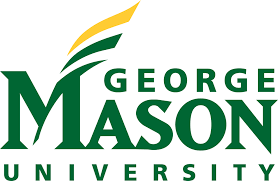George Mason University: Future 50 Foods stations help Mason students eat sustainably and nutritiously
When diners came to lunch at George Mason University dining halls this spring, they found little card tents by each food item. In addition to noting what the food was, each card was color-coded green, yellow, or red to indicate what the food’s carbon impact was.
The carbon impact indictors are a part of Mason Dining’s efforts to encourage students to eat sustainably. All food has a carbon impact, which reflects the amount of greenhouse gas emissions that are caused by creating that food, whether it’s from growing, transporting, processing, cooking or disposal.
Green cards noted foods with the lowest carbon impact, such as beans and seasonal fruits and vegetables. Red cards reflected foods with high carbon impact, such as meat, cheese, and eggs.
“These indicators invited guests to reflect on the process of how food gets to our plates,” said Sophia Nelson, marketing specialist with Mason Dining. “With more than 75% of our options having a low carbon impact, we invited students to opt for a sustainable diet.”
In 2019, the World Wildlife Fund and Knorr identified 50 foods, known as Future 50 Foods, that have a lower environmental impact, as well as being nutritious. In the 2022-23 school year, Mason Dining turned existing salad bars at Southside and Ike’s dining halls into Future 50 Food Stations. Students were able to build their own dishes, or select a featured dish, such as couscous salad or Hungarian goulash, created by the chefs using the Future 50 Foods.
“The whole program aims to provide students with a better understanding of where their food comes from, the impact of their dietary choices on the environment, how they can support local farmers, and how to eat healthier without sacrificing the taste,” said Sofya Vetrova, Mason Dining’s marketing director.
Mason Dining Dietitian Brooke Tresch also uses Future 50 Foods in her campus events that help teach students how to eat healthy. One event in the spring semester taught students how to make overnight oats with flax seeds.
The program continues to grow in its sustainability, with the station offering ingredients such as lettuce grown at Mason’s Hydroponic Greenhouse, as well as from local farmers and businesses. Additionally, since 2018, Mason Dining has been collecting food waste for composting.
The program is a success both in terms of sustainability and in terms of customer satisfaction. Before the launch of the Future 50 Food stations, a survey of Mason students found that many supported a more plant-based diet. In March 2022, Mason Dining conducted a survey to identify the overall satisfaction rate for meal options served to students. More than 7,000 students took part in the survey. The results identified the need for healthier, more nutrient-rich meals, as well as allergen-free and religious-friendly options. More than 90% of respondents had an age demographic of 19–24 years of age. Within that group, 79% reported making a choice to go meatless one or more days a week, and 65% indicated a preference for a more plant-forward diet.
After the stations debuted, Mason Dining again surveyed students, the majority of whom indicated that they enjoy eating at the plant-forward food station. “After seeing the dedication that Mason Dining has put into the Future 50 Food Program at its dining halls, I am confident that the vegan and vegetarian community at Mason will continue to flourish in the future,” said Wen Tran, a vegan diner and student.
“In response to the growing demand for flexitarian food options, it’s important for universities like Mason to provide more plant-forward meals to address students’ needs,” Vetrova said. “Not only will this help create a healthier environment on campus, but it will also help universities attract and retain students who are looking for more vegetarian options.”

